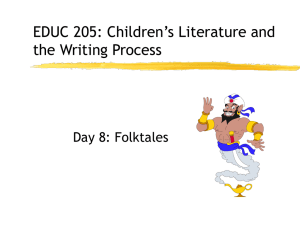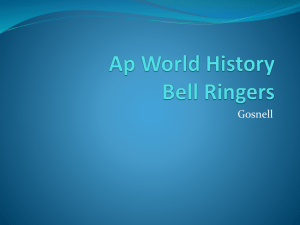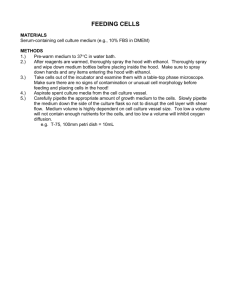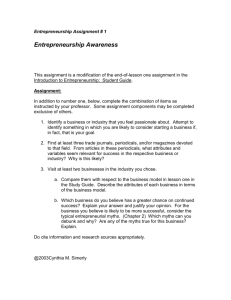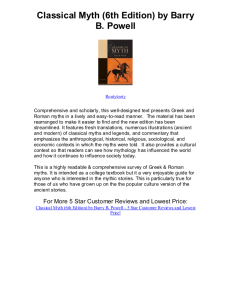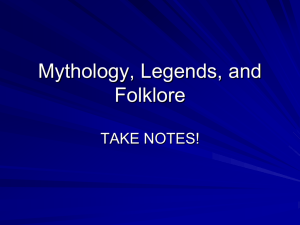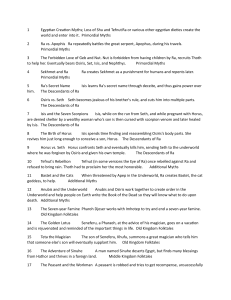Differentiating Folk Tradition
advertisement
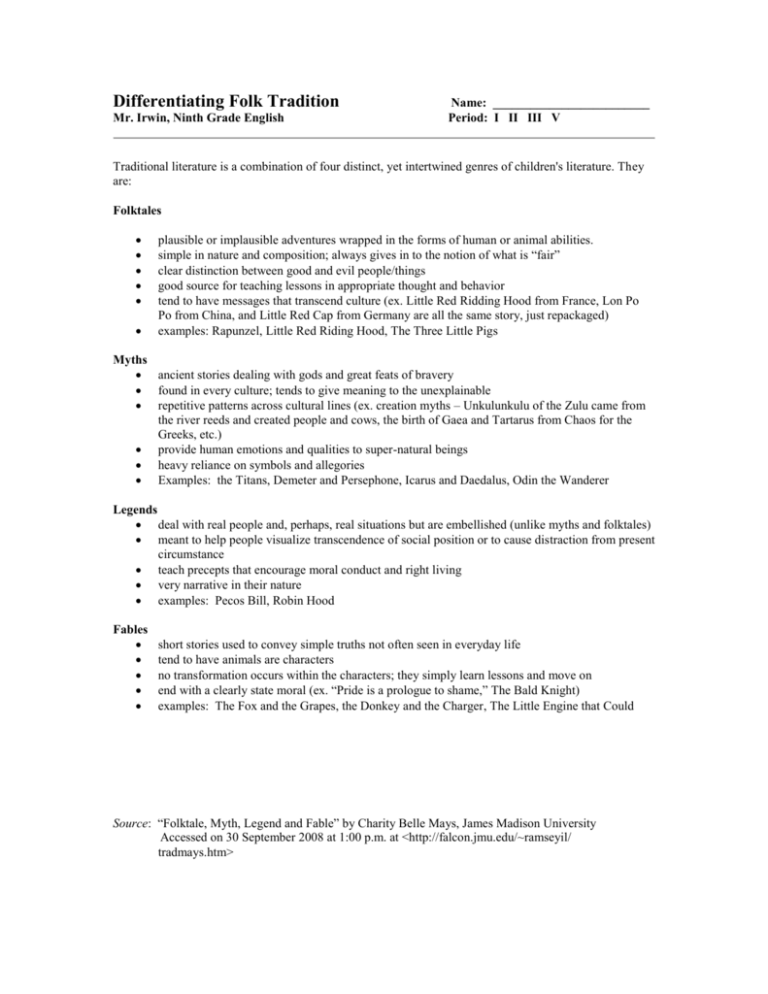
Differentiating Folk Tradition Mr. Irwin, Ninth Grade English Name: _________________________ Period: I II III V Traditional literature is a combination of four distinct, yet intertwined genres of children's literature. They are: Folktales plausible or implausible adventures wrapped in the forms of human or animal abilities. simple in nature and composition; always gives in to the notion of what is “fair” clear distinction between good and evil people/things good source for teaching lessons in appropriate thought and behavior tend to have messages that transcend culture (ex. Little Red Ridding Hood from France, Lon Po Po from China, and Little Red Cap from Germany are all the same story, just repackaged) examples: Rapunzel, Little Red Riding Hood, The Three Little Pigs Myths ancient stories dealing with gods and great feats of bravery found in every culture; tends to give meaning to the unexplainable repetitive patterns across cultural lines (ex. creation myths – Unkulunkulu of the Zulu came from the river reeds and created people and cows, the birth of Gaea and Tartarus from Chaos for the Greeks, etc.) provide human emotions and qualities to super-natural beings heavy reliance on symbols and allegories Examples: the Titans, Demeter and Persephone, Icarus and Daedalus, Odin the Wanderer Legends deal with real people and, perhaps, real situations but are embellished (unlike myths and folktales) meant to help people visualize transcendence of social position or to cause distraction from present circumstance teach precepts that encourage moral conduct and right living very narrative in their nature examples: Pecos Bill, Robin Hood Fables short stories used to convey simple truths not often seen in everyday life tend to have animals are characters no transformation occurs within the characters; they simply learn lessons and move on end with a clearly state moral (ex. “Pride is a prologue to shame,” The Bald Knight) examples: The Fox and the Grapes, the Donkey and the Charger, The Little Engine that Could Source: “Folktale, Myth, Legend and Fable” by Charity Belle Mays, James Madison University Accessed on 30 September 2008 at 1:00 p.m. at <http://falcon.jmu.edu/~ramseyil/ tradmays.htm>



